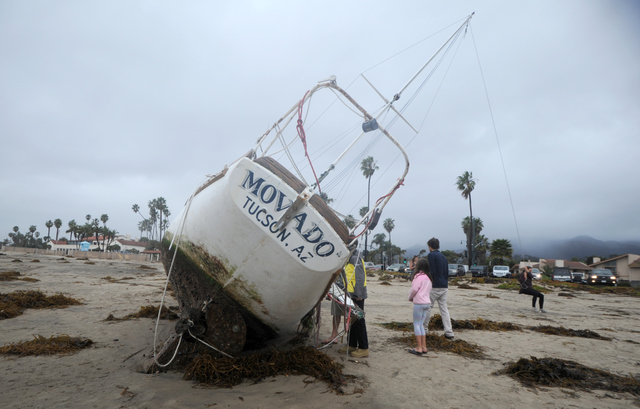No Jubilation Among Water Officials
Weekend Rains Offered Some Relief, but Much More Is Needed

Though this weekend’s rains delivered a solid eight to nine inches in the Santa Ynez Mountains, South Coast water managers remain extremely concerned about persistent drought conditions. “To grasp the magnitude of the hole we’re in,” wrote Santa Barbara City water resources manager Joshua Haggmark, “the recent storms dumped just over eight inches at Gibraltar and brought us up to the third driest year on record with 10.4 inches.” Two additional storms of similar magnitude, he said, would be required to achieve just average rainfall. “Looking ahead at the forecast,” he went on, “there is no major rain in the future, which has me very concerned this may be it for the year.”
The good news, said Haggmark, is that the rains deposited about 1,200 acre-feet — roughly one-twelfth of the city’s annual demand — into the Gibraltar Reservoir. Because the rains stirred up the heavy silts that were already there, the water quality is not high and will have to sit for a while. The main reservoir for the South Coast — Lake Cachuma — saw a rise of 700 acre-feet. Perhaps the biggest impact of the recent storms has yet to be felt. By providing the South Coast with a solid drenching, backyard landscapers will no longer feel the urgency to water their plants and can turn off their spigots. “Their outdoor irrigation system should be shut off for the next couple weeks,” Haggmark said. For Montecito, the picture is grimmer. There, water district manager Tom Mosby had been hoping the rains would drop 600 acre-feet into Montecito’s reservoir, Jameson Lake. Instead, Mosby said, it got just 65 acre-feet. Last week, the Montecito district enacted a water rationing.
In other water-related news, Haggmark reported that a snafu in the bidding process has held up plans to get started on revamping the city’s reclaimed water system, which at 25 years old, has been barely limping along. Because that system does not produce treated sewage water that conforms to federal water-quality standards, Haggmark and others have been forced to combine about 500 acre-feet of potable drinking water into the mix to create 800 acre-feet of reclaimed water annually. That water is then spread on playing fields and parks. Haggmark said if the city did not redo the bidding process, it might be vulnerable to a legal challenge. By starting over, he said, the process will be delayed by two months. Even so, he insisted, the revamped system should still be up and operating by next year.



